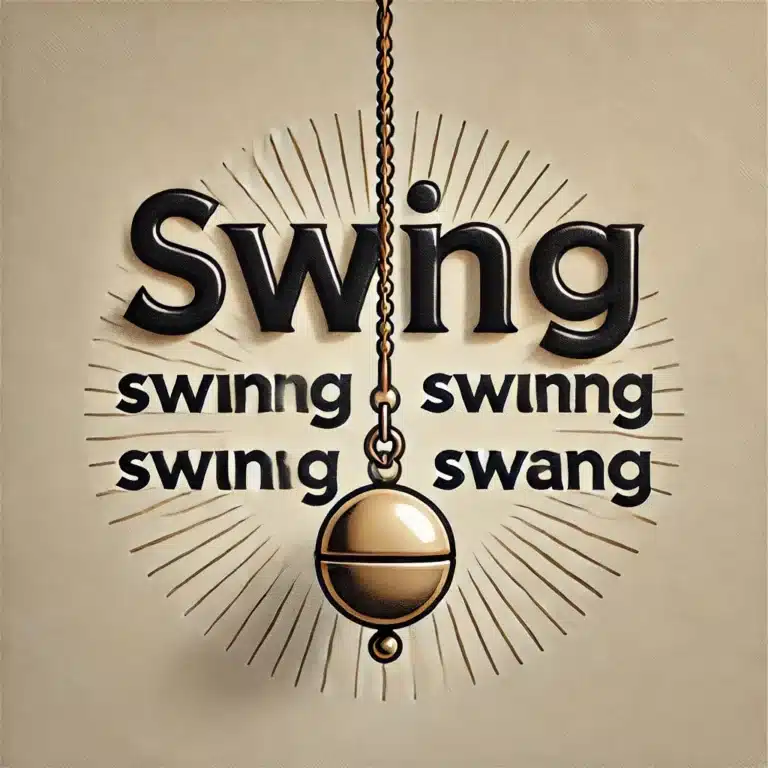Mastering the Past Tense of Panic: A Comprehensive Guide
Have you ever found yourself in a situation where you needed to describe a past moment of panic, but weren’t sure if you should say “I panic” or “I panicked”? You’re not alone. The past tense of “panic” can be a tricky subject for many English speakers. In this comprehensive guide, we’ll dive deep into the world of “panic” and its various forms, ensuring you’ll never second-guess yourself again when writing or speaking about past moments of alarm.
Introduction:
Picture this: You’re giving a presentation at work, and suddenly your mind goes blank. Your heart races, your palms sweat, and you feel a wave of anxiety wash over you. In that moment, you’re experiencing panic. But how would you describe this experience after the fact? Would you say, “I panic during the presentation” or “I panicked during the presentation”?
This confusion surrounding the past tense of panic is more common than you might think. Let’s unravel this grammatical mystery and explore the various facets of this emotionally charged word.
“Panic”: More Than Just a Feeling
Before we dive into the past tense conundrum, let’s take a closer look at the word “panic” itself. This versatile term has an interesting etymology and can function as multiple parts of speech.
Etymology and Origin
The word “panic” has its roots in ancient Greek mythology. It’s derived from the name of Pan, the god of nature and shepherds. According to legend, Pan would cause sudden, inexplicable fear in people and animals, especially in lonely places. This state of intense, irrational fear became known as “panic.”
Read More About : Arise, Arose, Arisen: Mastering the Tricky Verb “Arise”
“Panic” as a Noun
As a noun, panic refers to a sudden, overwhelming feeling of fear or anxiety. For example:
- “The fire alarm caused panic among the shoppers.”
- “She felt a surge of panic when she realized she had lost her wallet.”
“Panic” as an Adjective
When used as an adjective, panic describes something related to or characterized by panic. For instance:
- “The panic buying of toilet paper during the pandemic was unexpected.”
- “His panic reaction to the spider was quite amusing to watch.”
“Panic” as a Verb
As a verb, to panic means to be affected by panic or to react with panic. This is where our past tense question comes into play. Here are some examples of “panic” used as a verb:
- Present tense: “I panic when I see a spider.”
- Past tense: “She panicked when she heard the loud noise.”
The Past Tense Puzzle: Panic or Panicked?
Now, let’s address the main question: What’s the correct past tense of panic? The answer is simple: panicked.
“Panicked” is the correct past tense and past participle form of the verb “panic.” This follows the regular pattern for forming past tense in English, where we add “-ed” to the end of the verb.
Common Misconceptions
Some people mistakenly believe that “panic” is the past tense form, perhaps due to its similarity to irregular verbs like “cut” or “put” which don’t change in the past tense. However, “panic” is a regular verb and follows standard conjugation rules.
Rules for Forming Past Tense with -ed Endings
When adding “-ed” to form the past tense, there are a few rules to keep in mind:
- For most verbs, simply add “-ed” (e.g., “talk” becomes “talked”)
- For verbs ending in “e,” just add “d” (e.g., “like” becomes “liked”)
- For verbs ending in a consonant + “y,” change “y” to “i” and add “-ed” (e.g., “try” becomes “tried”)
- For verbs ending in a stressed syllable with a single vowel followed by a single consonant, double the final consonant before adding “-ed” (e.g., “stop” becomes “stopped”)
“Panic” falls into the fourth category. The final “c” is doubled before adding “-ed,” resulting in “panicked.”
Pronunciation Guide: Mastering “Panic” and “Panicked”
Proper pronunciation is crucial for effective communication. Let’s break down how to pronounce both “panic” and “panicked.”
Panic
- Pronunciation: /ˈpænɪk/
- Syllable breakdown: pan-ic
- Stress: on the first syllable
Panicked
- Pronunciation: /ˈpænɪkt/
- Syllable breakdown: pan-icked
- Stress: on the first syllable
Pro Tip: When pronouncing “panicked,” make sure to clearly enunciate the “-ed” ending. It should sound like a distinct “t” sound at the end of the word.
Verb Tense Deep Dive: “Panic” Across Time
To fully understand how “panic” functions as a verb, let’s explore its conjugation across various tenses.
| Tense | Simple | Continuous | Perfect |
|---|---|---|---|
| Present | I panic | I am panicking | I have panicked |
| Past | I panicked | I was panicking | I had panicked |
| Future | I will panic | I will be panicking | I will have panicked |
This table illustrates how “panic” transforms across different verb tense forms, helping you use it correctly in any temporal context.
“Panic” in Action: Real-world Usage
To better understand how “panic” and “panicked” are used in everyday language, let’s look at some examples from literature and common expressions.
Examples in Literature
- “I panicked. I had no idea what to do next.” – Suzanne Collins, “The Hunger Games”
- “Don’t panic, it’s organic!” – Douglas Adams, “The Hitchhiker’s Guide to the Galaxy”
Idiomatic Expressions
- “Don’t panic buy”: To purchase large quantities of a product due to fears of a shortage
- “Panic button”: A metaphorical button one might press in an emergency
- “Panic attack”: A sudden episode of intense fear or anxiety
Case Study: The War of the Worlds Broadcast
One of the most famous instances of widespread panic occurred on October 30, 1938, when Orson Welles broadcast a radio adaptation of H.G. Wells’ “The War of the Worlds.” The realistic portrayal of an alien invasion caused many listeners to panic, believing it was a real news broadcast. This event demonstrates the power of panic and how quickly it can spread in certain situations.
Beyond “Panic”: Exploring Synonyms and Related Terms
While “panic” is a powerful word, sometimes you might want to use a synonym to add variety to your writing or to convey a specific nuance. Here are some alternatives:
- Alarm
- Frenzy
- Hysteria
- Consternation
- Trepidation
- Dread
- Dismay
- Terror
- Anxiety
- Agitation
Each of these words carries its own subtle connotations, so choose wisely based on the context and intensity of the emotion you’re trying to convey.
The Grammar Nitty-Gritty: Irregular Verbs vs. “Panic”
As we’ve established, “panic” is a regular verb. But what makes a verb regular or irregular? Let’s explore this concept to better understand why “panic” follows standard conjugation rules.
Regular Verbs
Regular verbs form their past tense and past participle by adding “-ed” or “-d” to the base form. Examples include:
- Play → Played
- Talk → Talked
- Panic → Panicked
Irregular Verbs
Irregular verbs don’t follow this standard pattern. Their past tense and past participle forms can vary widely. For example:
- Go → Went
- Be → Was/Were
- Eat → Ate
Remember: “Panic” is not an irregular verb, despite some people’s misconceptions. Always use “panicked” for the past tense.
“Panic” in Professional and Academic Writing
When using “panic” or “panicked” in formal contexts, it’s essential to maintain a professional tone. Here are some tips:
- Use “panic” sparingly in academic or professional writing unless discussing psychological phenomena.
- Consider more formal alternatives like “exhibit distress” or “experience acute anxiety” when appropriate.
- Avoid colloquial expressions like “totally panicked” in formal writing.
Mastering “Panic”: Practice Exercises
To help solidify your understanding, try these exercises:
- Fill in the blank with the correct form of “panic”:
- Yesterday, I __ when I saw a spider in my room. (Answer: panicked)
- She often __ in crowded places. (Answer: panics)
- Correct the errors in these sentences:
- “He panic when he realized he was late.” (Correct: He panicked when he realized he was late.)
- “The crowd was panicing as the fire spread.” (Correct: The crowd was panicking as the fire spread.)
- Write a short paragraph using both “panic” and “panicked” correctly.
Conclusion: Keeping Calm About “Panic”
Understanding the correct usage of “panic” and its past tense form “panicked” is crucial for clear communication. Remember these key points:
- “Panic” can be a noun, adjective, or verb
- The correct past tense of “panic” is always “panicked”
- Pronunciation matters: pay attention to the “-ed” sound in “panicked”
- Choose synonyms wisely to convey the right intensity of emotion
By mastering these concepts, you’ll never have to panic about using “panic” correctly again!
FAQs: Quick Answers to Common “Panic” Questions
Q: Is “panicked” ever spelled with one ‘k’?
A: No, “panicked” is always spelled with two ‘k’s.
Q: Can “panic” be used as a noun and a verb in the same sentence?
A: Yes! For example: “The panic in the room caused everyone to panic.”
Q: How does the meaning change when “panic” is used as different parts of speech?
A: As a noun, it refers to the feeling itself. As a verb, it describes the action of experiencing panic. As an adjective, it describes something related to or characterized by panic.
By following this comprehensive guide, you’ll be well-equipped to use “panic” and “panicked” correctly in any context. Remember, practice makes perfect, so don’t hesitate to incorporate these words into your everyday vocabulary!







